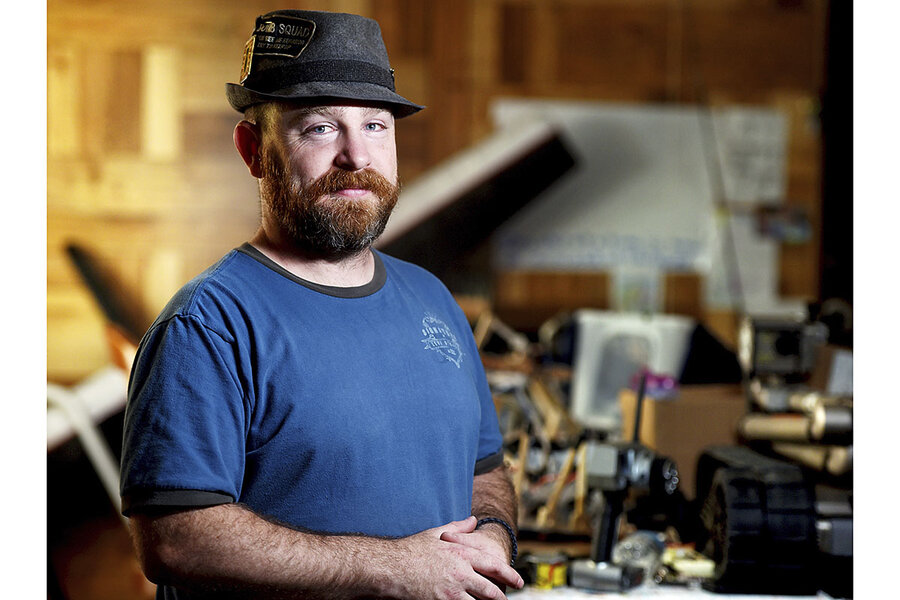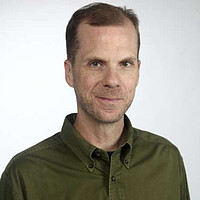In Mountain West, how frontier ethos magnifies problem of suicide
Loading...
| Sacramento, Calif.
In 2000, former soldier Matt Kuntz learned the limits of the frontier ethos when the West Point graduate’s silent despair brought him to the brink of suicide. The pervasive fear that asking for help reveals mental weakness – even moral decay – discourages many residents of the Mountain West from receiving treatment. A study published last year suggested that the Mountain West’s mythical code of self-reliance contributes to the region’s high suicide rates. Montana and six other states in the region ranked among the 10 states with the highest suicide rates in a new study by the Centers for Disease Control and Prevention. Several factors linked to suicide – social isolation, drug and alcohol use, access to firearms, economic adversity – persist at higher levels in rural areas. Meanwhile, an acute deficiency of behavioral health services and a stigma against seeking treatment stymie suicide prevention efforts in the region. “This isn’t rural. It’s frontier,” says Michael Sandvig, president of the Idaho chapter of the National Alliance on Mental Illness. “Out here, you’re deemed to be a rugged individualist. People think they’re supposed to suck it up, and they don’t know what to do or what to say or who to say it to when they start having problems.”
Why We Wrote This
The suicides of Kate Spade and Anthony Bourdain drew extensive coverage that at once magnified the reach of the crisis and obscured the reality that tens of thousands of suicides occur far from the glare of fame in the country’s least populated expanses.
Matt Kuntz stood on a chair in his attic with one end of a rope around his neck. It was 2000, and Mr. Kuntz, then 22, found his nascent Army career ruined after he shredded ankle ligaments during a training exercise. The West Point graduate had dreamed of a life in uniform since childhood. The abrupt demise of his military ambitions pushed him toward the void.
“My sense of being was broken,” says Kuntz, a native of Helena, Mont., who now serves as executive director of the state’s chapter of the National Alliance on Mental Illness (NAMI). He stopped himself from stepping off the chair only when he realized he had yet to pay his monthly rent. He felt obligated to his landlords for the burden his death would impose, so he walked outside and slipped a check in a nearby mailbox.
On his way back, he happened to hear his neighbor crying, and when Kuntz approached and asked what was wrong, the man began to pour forth his marital troubles. For two hours, Kuntz sat on his neighbor’s porch and listened, and while he shared nothing about his own struggle, the chance exchange broke the closed loop of suicidal thoughts. He went home and took down the noose.
Why We Wrote This
The suicides of Kate Spade and Anthony Bourdain drew extensive coverage that at once magnified the reach of the crisis and obscured the reality that tens of thousands of suicides occur far from the glare of fame in the country’s least populated expanses.
Eighteen years later, the memory of his worst day motivates the former soldier to fight the scourge of suicide in Montana, where residents die by their own hand at a higher rate than any other state in the country. “The need here is so dire, and the resources in most areas are so scarce,” Kuntz says. “When as a country and as a culture are we really going to drill down and help all these people who need care?”
The scope of the crisis received renewed attention last week when the Centers for Disease Control and Prevention (CDC) released a report showing the national suicide rate climbed 25 percent between 1999 and 2016. The rate rose across categories of age, gender, ethnicity, and race, and more than half of those who died by suicide lacked a diagnosis for a mental health condition. In 2016, nearly 45,000 people took their own lives, and suicide now stands as the country’s 10th leading cause of death.
The report arrived the same week that news broke of the suicides of fashion designer Kate Spade and chef and author Anthony Bourdain. Their deaths drew extensive coverage that at once magnified the reach of the crisis and obscured the reality that tens of thousands of suicides occur far from the glare of fame in the country’s least populated expanses.
The problem runs deep in the Mountain West. Montana and six other states in the region — Wyoming, New Mexico, Utah, Idaho, Colorado, and Nevada — ranked among the 10 states with the highest suicide rates in the CDC study; Arizona was 15th. From 2014 to 2016, the most recent period analyzed, the average rate of 25.1 suicides per 100,000 residents in those eight states almost doubled the national rate of 13.4.
Several factors linked to suicide — social isolation, drug and alcohol use, access to firearms, economic adversity — persist at higher levels in rural areas compared with urban centers. Meanwhile, an acute deficiency of behavioral health services and a stigma against seeking treatment stymie suicide prevention efforts in the Mountain West.
“We’re suffering throughout the state,” says Michael Sandvig, president of NAMI’s Idaho chapter. “Even in the urban areas, you usually have to make your appointments weeks in advance to get routine care, let alone crisis care. If you’re in a small town and it’s going to take you an hour to drive somewhere for services, you’re probably going to stay home.”
'Medical deserts'
Vast swaths of the Mountain West meet the federal definition of health professional shortage areas for primary care, dental, and behavioral health care. The prevalence of so-called “medical deserts” is compounded in the mental health field by the growing scarcity of psychiatrists, psychologists, and other practitioners across the country.
The US Department of Health and Human Services designates a mental health shortage area when the population-to-provider ratio eclipses 30,000 to 1 (or 20,000 to 1 in regions with high demand for services). The agency reported in April that most of Arizona, Idaho, Nevada, and Wyoming fall into shortage areas, along with two-thirds of New Mexico and Utah and half of Colorado and Montana. The eight states would need an additional 900 providers combined to remove the designations; more than 10,800 are needed nationwide.
A limit on federal funding for medical residency training since 1997 has exacerbated the dearth of providers. Merritt Hawkins, a physician search and consulting firm in Dallas, reported earlier this year that the spending cap has slowed the number of behavioral health clinicians entering the field at a time when 60 percent of psychiatrists are age 55 or older and nearing retirement.
The study found that 40 percent of the country’s 30,000 psychiatrists work in the five most populous states of California, Texas, Florida, New York, and Pennsylvania. Fewer than 4 percent practice in the eight states of the Mountain West. The disparity results, in part, from the presence of more residency programs in large cities coupled with the higher rate of uninsured patients in rural regions.
Mr. Sandvig laments the relative absence of practitioners in much of the West while recognizing why they gravitate to metro areas.
“You have a lot of people out here who, even under the Affordable Care Act, choose not to get any insurance because they think they’re healthy or they can’t afford it,” he says. “That leaves them without any mental health coverage. Providers are aware of that, so they go to places where more people are insured.”
NAMI estimates that 1 in 5 adults in the US, or some 44 million people, experience mental illness a year and 40 percent receive treatment. The deepening need for care and the rising suicide rate has led mental health advocates to call for a federally funded suicide prevention program that could deliver more clinicians to sparsely populated regions.
“We have to start treating suicide as a public health problem,” says Jill Harkavy-Friedman, vice president of research for the American Foundation for Suicide Prevention in New York. “And part of what we have to do is encourage mental health professionals to come into the field and work in areas outside cities.”
The expansion of telemedicine networks — technology that enables clinicians to provide long-distance diagnoses and treatment to patients, most often via videoconference — has alleviated the practitioner shortage in some remote areas to varying degrees. As behavioral health providers extend their virtual reach, more primary care doctors in urban and rural settings alike are integrating mental health into patients’ course of care, conducting screenings to identify conditions and make referrals to specialists.
In Montana, Kuntz, who worked to establish a mental health research center on a college campus in Bozeman four years ago, has joined other advocates in nurturing a plan to create a psychiatric residency program in Billings. If the initiative takes shape, he hopes that providers-in-training will decide to practice in the state after completing their residency.
“We can’t wait for the pharmaceutical companies or the federal government to do something,” he says. “As it is, it sometimes feels like we’re trying to put out a fire after several rooms of the house have burned down. We have to act.”
Yet persuading people in rural regions to seek care poses a quandary perhaps more intractable than attracting behavioral health providers. K. Bryant Smalley, chairman of the American Psychological Association’s committee on rural health, explains that while civic leaders might hail the opening of a new clinic, travel distances and the prospect of losing a day’s wages can deter potential patients.
“It’s not a ‘Field of Dreams’ scenario,” he says. “If you build it, they won’t necessarily come. These are areas that rely on productivity-based labor, where people can’t always get a day off or can’t afford to take a day off. They’re faced with difficult choices.”
The myth of the rugged individualist
The pervasive fear that asking for help reveals mental weakness — even moral decay — further discourages residents from receiving treatment. A study published last year by Carolyn Pepper, a professor of psychology at the University of Wyoming, suggested that the Mountain West’s mythical code of self-reliance contributes to the region’s high suicide rates.
“This isn’t rural. It’s frontier,” Sandvig says. “Out here, you’re deemed to be a rugged individualist. People think they’re supposed to suck it up, and they don’t know what to do or what to say or who to say it to when they start having problems.”
In 2000, Kuntz learned the limits of the frontier ethos when his silent despair brought him to the brink of suicide. Seven years later, he watched his stepbrother, an Iraq War veteran struggling with post-traumatic stress disorder, retreat into his mind rather than accept help. He turned a gun on himself in 2007.
His death instilled a sense of urgency in Kuntz to save others from a similar fate. At the invitation of Sen. Jon Tester, (D) of Montana, he testified before Congress in support of legislation that requires the military to perform face-to-face mental health screenings of all service members before and after their deployments. The bill passed in 2010.
But the sense of accomplishment soon dissipated for Kuntz, the married father of three young children. The experience taught him how much work remains, how much suffering exists.
“Too many people are being lost to suicide,” he says. “More must be done. Every day.”








